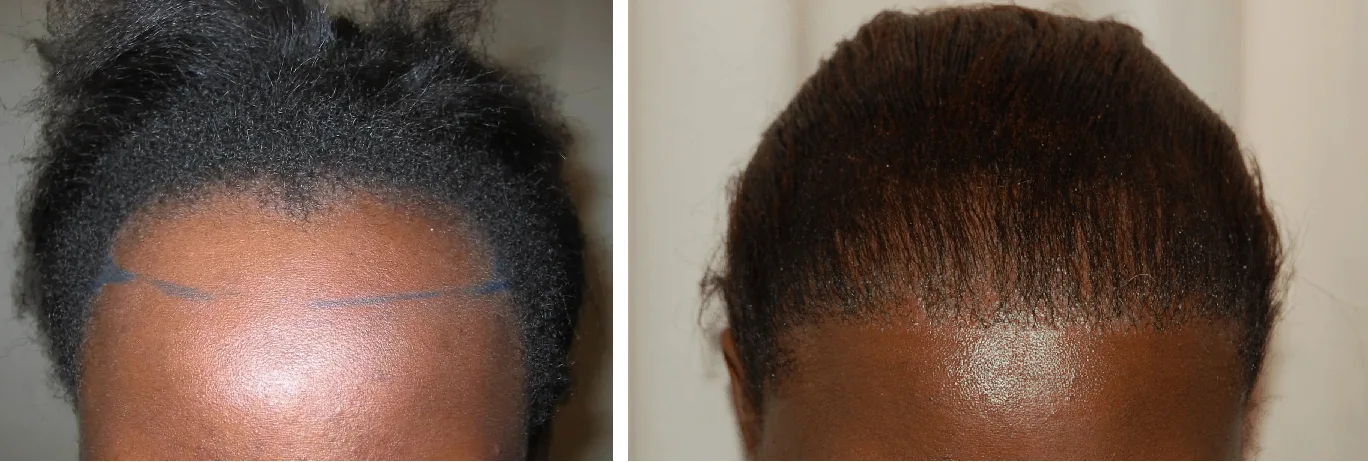For the most part, these dental problems often go unnoticed in childhood. However, as you grow into adulthood, protruding or crooked teeth become more pronounced and significant. Thus, the resultant outcome of such teeth misalignment is called malocclusion. Malocclusion is an extremely common dental problem that can impact the health of your teeth as well as your smile, negatively.
Read on to find out more about malocclusion.
What is Malocclusion?
To reiterate, malocclusion is defined as the misalignment of your permanent teeth. Due to this dental problem, you will be unable to exercise proper bite functions since your teeth do not align properly from front to back.
Malocclusion is not considered a major dental problem because it does not affect oral health. However, it is given more priority because it disrupts the appearance of the smile, and hence, reduces the quality of your life.
Nevertheless, if you suffer from severe cases of malocclusion, i.e., if your teeth are crowded extensively, then you may be prone to a wider set of dental problems like tooth decay or tooth loss. In addition to this, your bite functions as well as your speech functions can get impaired.
Causes of Malocclusion:
Any issue can be treated if the root of the problem can be identified. If you understand what causes malocclusion, you can easily avoid it by taking precautions to protect your oral health. Here are some of the causes of malocclusion:
- Habitual Actions Habits that alter the shape or structure of your teeth and jaw.
- Tooth Loss: Lost teeth can leave more space in your mouth for the remaining teeth to move around.
- Birth Defects: You have a cleft lip and palate problem
- Tumours: Any significant tumours in your mouth or jaw.
- Poor Orthodontic Treatments: Badly fitted orthodontic appliances like braces or dental crowns can also cause malocclusion.
- Atypical Teeth: Abnormally shaped or impacted upper and lower teeth.
- Trauma or Injuries: if you have experienced any dental trauma or injury to the mouth, it can result in the misalignment of your jaw.
- Lack of Oral Care: Poor maintenance of your oral hygiene.
Apart from these common causes of malocclusion, some lifelong habits can also influence the growth and alignment of your teeth, or jaw. For instance, habits like frequent use of pacifiers from 3 years of age, prolonged bottle feeding in early childhood, and even, thumb sucking; are all factors that contribute to the cause of malocclusion.
Before undergoing orthodontic treatment, you need to know what type of malocclusion you have. Yes. In fact, there are many different types of malocclusions.
What are the Different Types of Malocclusions?
Overbite
Overbites refer to the overlap of your lower front teeth. Some of the problems associated with an overbite are:
- biting at the lower gumline
- biting into the roof of your mouth
Underbite
Also known as an anterior crossbite, an underbite refers to the abnormal positioning of the lower front teeth. Here, the lower front teeth overlap the upper front teeth, resulting in malocclusion. Some of the common causes of underbite are:
- Genetic factors
- Misalignment of the lower and upper jaws
- Overcrowding of the teeth
Crossbite
A crossbite is a different type of malocclusion, where the upper teeth fit inside the lower teeth. This problem can mostly be noticed when the upper front teeth are not properly aligned. If left untreated, crossbites can lead to severe jaw issues, such as temporomandibular joint disorders. It can also affect your facial features.
Open Bite
In an open bite, while your upper front teeth protrude, they do not overlap your lower teeth. Thus, a small opening is developed that leads straight to your mouth. One of the pivotal causes of an open bite is the weakened skeletal framework that adjoins the upper and lower jaws.
Some habitual causes of an open bite are finger, tongue, or thumb sucking. Open bites are injurious to your oral health, as they can lead to problems with chewing and tooth eruption.
Some of the other common types of malocclusions that require treatment with an orthodontist are:
- Overcrowding of the teeth
- spacing between the teeth.
- Horizontal protrusion of the teeth (overjet).
- Space that exists between two adjacent teeth (diastema)
- Impacted or missing teeth
What are the health risks of Malocclusion?
Now that you are well aware of what a malocclusion is and how it might manifest in your mouth, let us help you determine the potential health risks connected to this problem:
- Difficulty in chewing hard foods
- grinding of the teeth
- Speech problems can also be caused by malocclusion
- Premature or late loss of a baby tooth
- Replacing nasal breathing with mouth breathing
- Tooth decay and dental caries
- Gum diseases, or periodontal diseases
- Pain in the jaw joints
- Distorted jaw
To protect yourself from the above-mentioned health risks, malocclusions must be corrected as soon as they are identified. Hence, you will require orthodontic treatments to correct your misalignment.
We have a team of expert orthodontists at Clinic Effect who will treat your problems by diagnosing your malocclusion type and the exact class of malocclusion you are in.
Wait, what are the classes of malocclusion?
Keep reading to find out!
Classes of Malocclusion:
Usually, the dentist will first conduct a dental exam of your teeth using X-rays before suggesting whether you require treatment. Once a malocclusion problem has been identified, the dentist will then refer you to an orthodontist for further treatment.
However, before proceeding with the referral, the dentist first classifies the malocclusion problem by type and severity. Let’s look at the three main classes that determine the severity of malocclusion:
CLASS 1:
This is a non-severe case of misalignment. It is one of the most common cases of malocclusion. Here, the upper molars overlap the lower molars of your teeth in the desired positions. However, the remaining set of teeth is either too crowded or too far apart.
CLASS 2:
People who are classified as having class 2 malocclusion have a severe overbite. In these circumstances, both your upper teeth and upper jaw significantly overlap your lower teeth and jaw.
CLASS 3:
If you have a severe underbite, then you can be diagnosed with a class 3 malocclusion. Here, your lower teeth overlap your upper teeth. Sometimes, these types of malocclusions can arise from genetic factors prevailing in different ethnic groups.
Treating Malocclusion:
Malocclusion problems need to be treated right away because they can cause a new set of issues to your oral health. However, before you seek different methods to treat these dental complications, you need to be able to recognize their symptoms.
Listed below are some of the symptoms of malocclusion, you need to look out for:
- Misalignment of your teeth. An OBVIOUS indication!
- Discomfort when you bite or chew food.
- Lips are obstructing your speech functions
- Inability to breathe through the mouth.
- Tongue- or cheek-biting on a regular basis
- Change in your face structure, or facial deformities
Once the dentist conducts a detailed examination of your teeth, they will proceed to discuss various treatment options with you, such as:
Braces & Aligners
Metal braces can be used to correct the alignment of your teeth. In some cases, your dentist may advise you to use aligners as part of your orthodontic treatment. Aligners are only used if your malocclusion is mild.
Retainers
Another type of orthodontic appliance that can correct the position of your teeth is a retainer. Ideally, retainers are placed after orthodontic treatment with brace is complete.
Teeth extraction:
Sometimes, the orthodontist may suggest the removal of a tooth or few teeth to correct the overcrowding in your mouth.
Surgical Intervention:
Sometimes, if your jaws are distorted because of malocclusion, the dentist may recommend surgeries to reform or shorten your teeth.
Alterations
Other treatment options include reshaping, bonding, or capping to alter the structure of the teeth.
It takes at least two to three years to resolve a malocclusion problem, regardless of the dental procedure chosen. However, during this period, you should visit your dentist regularly and get thorough orthodontic care.
Tips to Prevent Malocclusion:
Malocclusion is mostly witnessed among children. Hence, by engaging in preventive orthodontics, malocclusions can easily be avoided. It also aids in the proper development of the craniofacial complex. Listed below are some of the tips to prevent malocclusion:
Educating the parent
Since malocclusions arise during the childhood phase, our dentists recommend parents educate themselves on preventive orthodontic care. This way, habits like prolonged bottle feeding, pacifier usage, or thumb sucking can be avoided at an early age, reducing the likelihood of malocclusion among the children.
Educating the parent
When you have an overcrowded mouth (malocclusion), it becomes more difficult to maintain your oral hygiene. As a result, debris can get stuck between your teeth and cause proximal caries. This can further lead to tooth decay. Thus, early detection of a decayed tooth, followed by extraction and immediate intervention with orthodontic care, is essential to preventing malocclusion.
Implants & Maintainers
Since teeth tend to shift into the open spaces in your mouth, it can cause a severe case of malocclusion, resulting from the subsequent misalignment of your teeth. Thus, if you are to have your tooth extracted, you may need dental implants to preserve the alignment of your teeth and prevent malocclusion.
Dentists recommend the use of space maintainers in the case of tooth loss in children to protect their alignment until the new permanent teeth erupt.
Extraction of Supernumerary Teeth
Supernumerary teeth refer to the additional number of teeth that appear along with regular teeth. Sometimes, instead of the general set of 32 teeth, people can develop 33 or even 34 teeth. The eruption of these additional teeth can cause malocclusion since there is a significant overcrowding issue prevailing in the mouth.
Thus, to prevent the issue of malocclusion, our orthodontists recommend getting your supernumerary teeth extracted. These are usually the peg-like teeth that appear between the maxillary central incisors.
Maintaining Good Oral Hygiene
Ultimately, the root of any dental problems, including malocclusion, is poor oral hygiene. Thus, always make sure to practise good oral hygiene for better dental health. Also remember to visit your dentist regularly for early detection of any underlying dental or malocclusion problems. Listed below are some tips to maintain your oral health:
- Overcrowding of the teeth
- Don’t forget to brush twice every day. Use gentle pressure while brushing to avoid damaging your teeth.
- Use dental floss to clean the hard-to-reach areas between your teeth
- Avoid consuming foods that can easily get stuck between your teeth, like seeds or hard food.
- Maintain the habit of getting regular dental cleanings to prevent the growth of plaque and bacteria.
Is your child prepared for their first orthodontic exam? Or maybe you believe that you too may have a malocclusion? In either case, our team of orthodontic experts would be delighted to take a look to ensure that your teeth are aligned properly.
At Clinic Effect, we provide high-quality orthodontic care to patients of all ages.
Check out our website to learn more about our orthodontic services.




